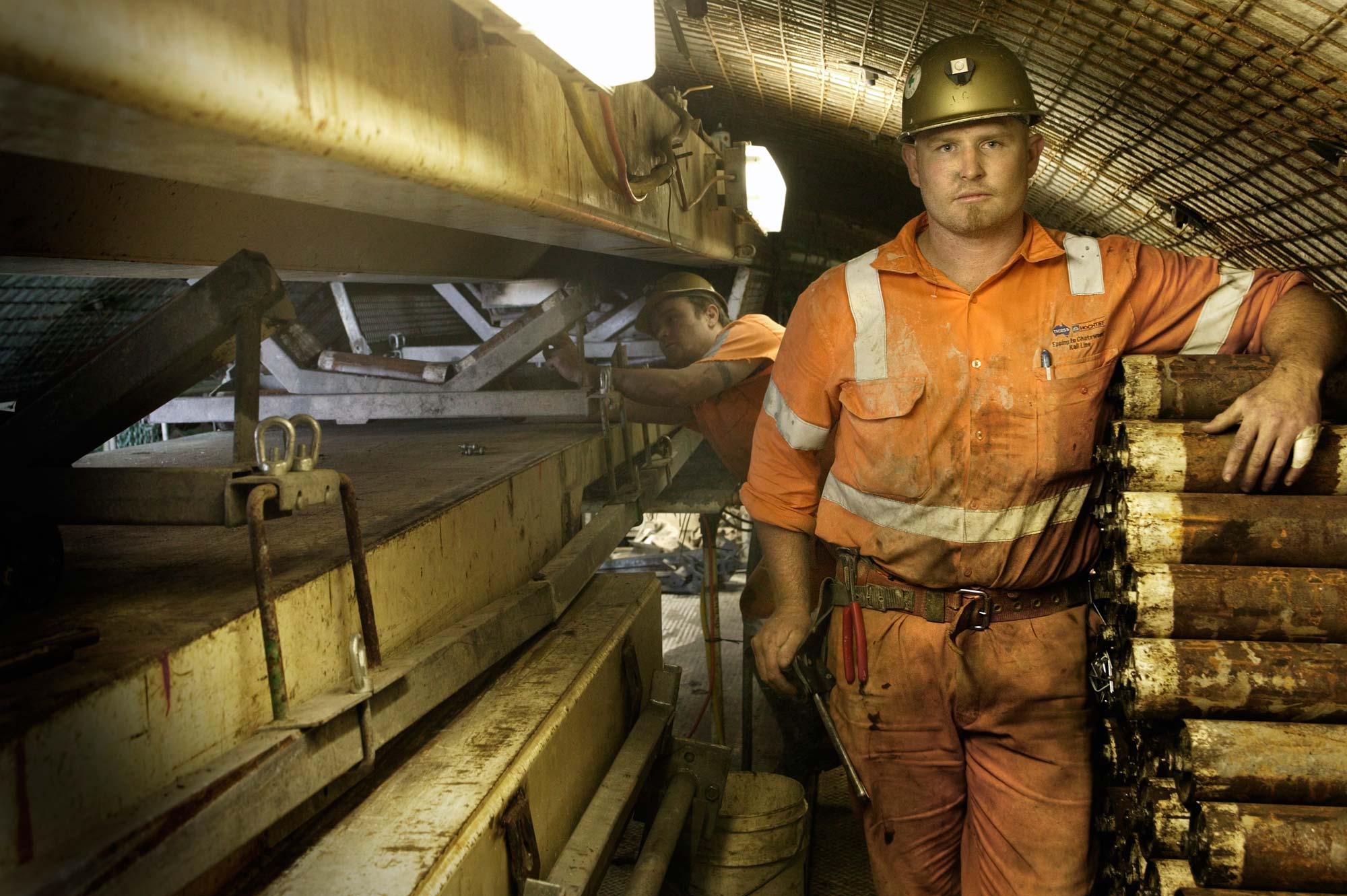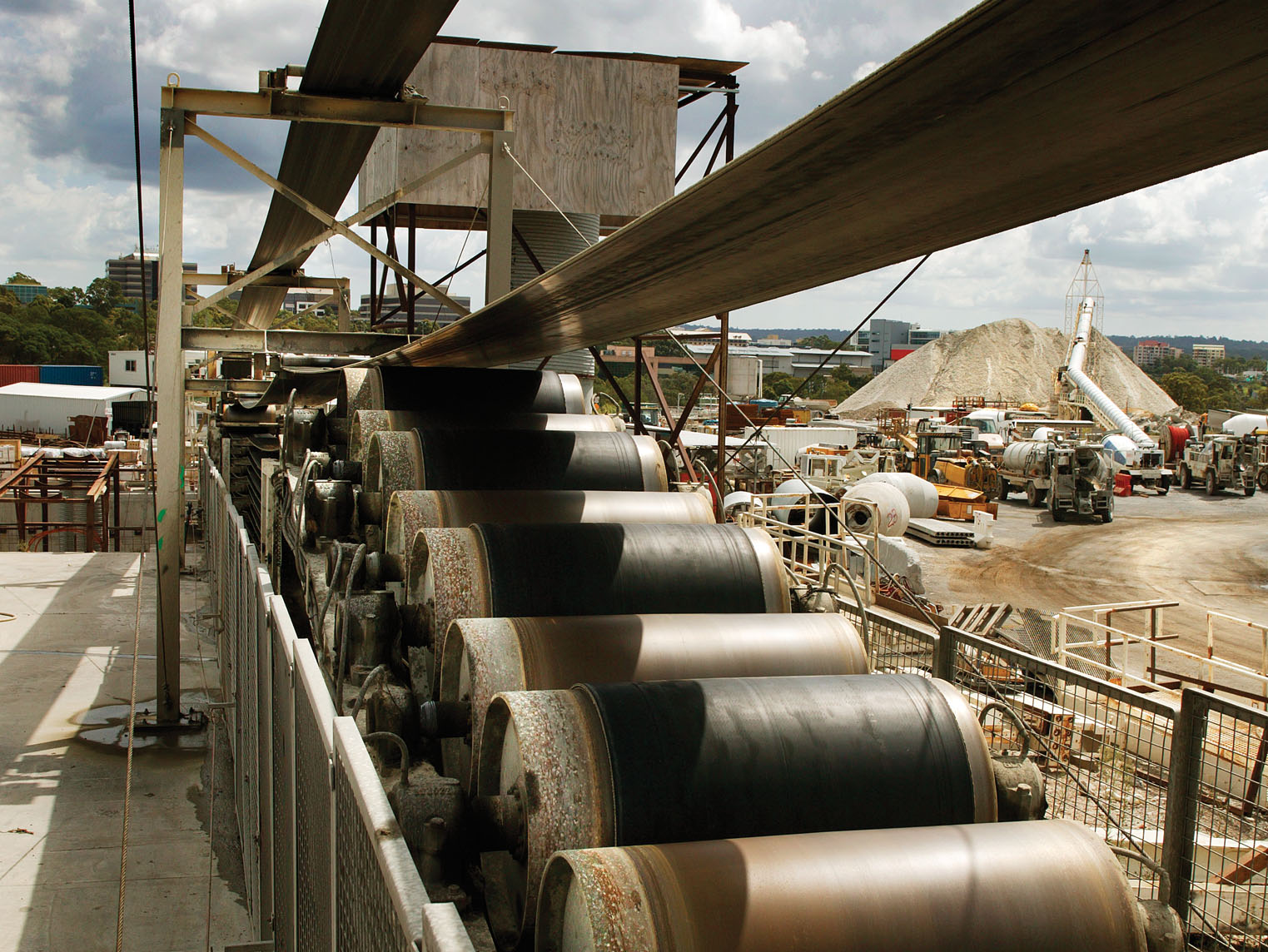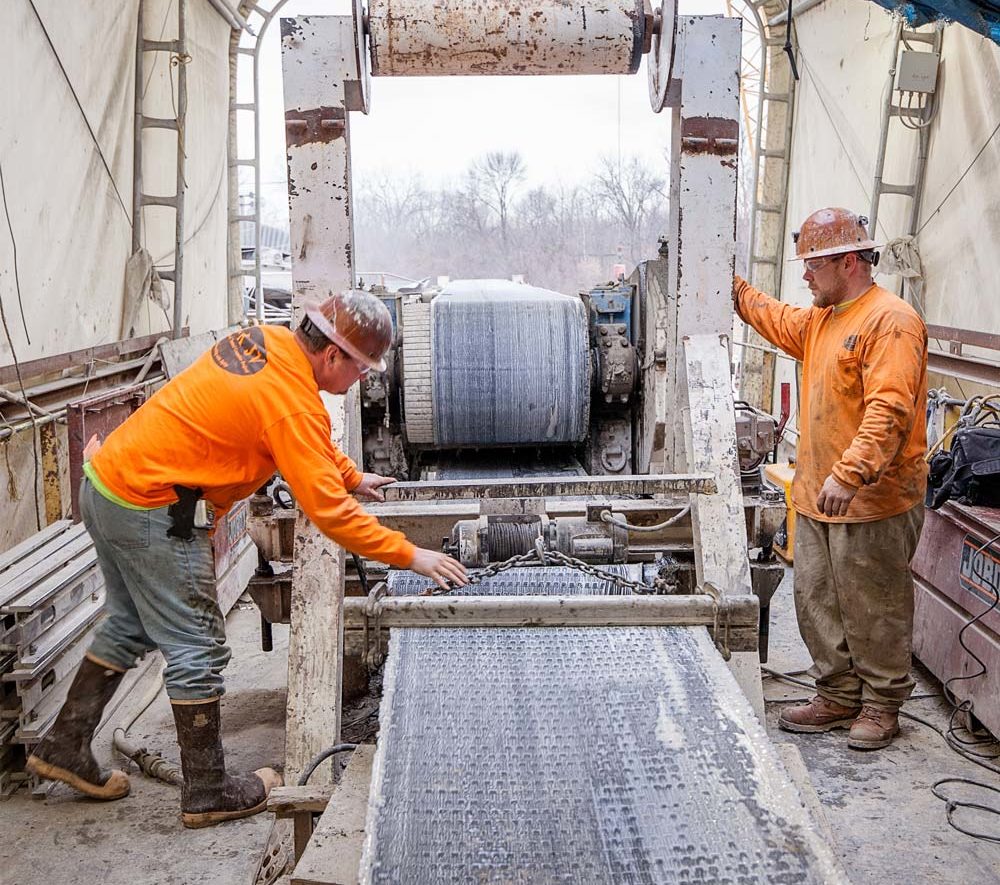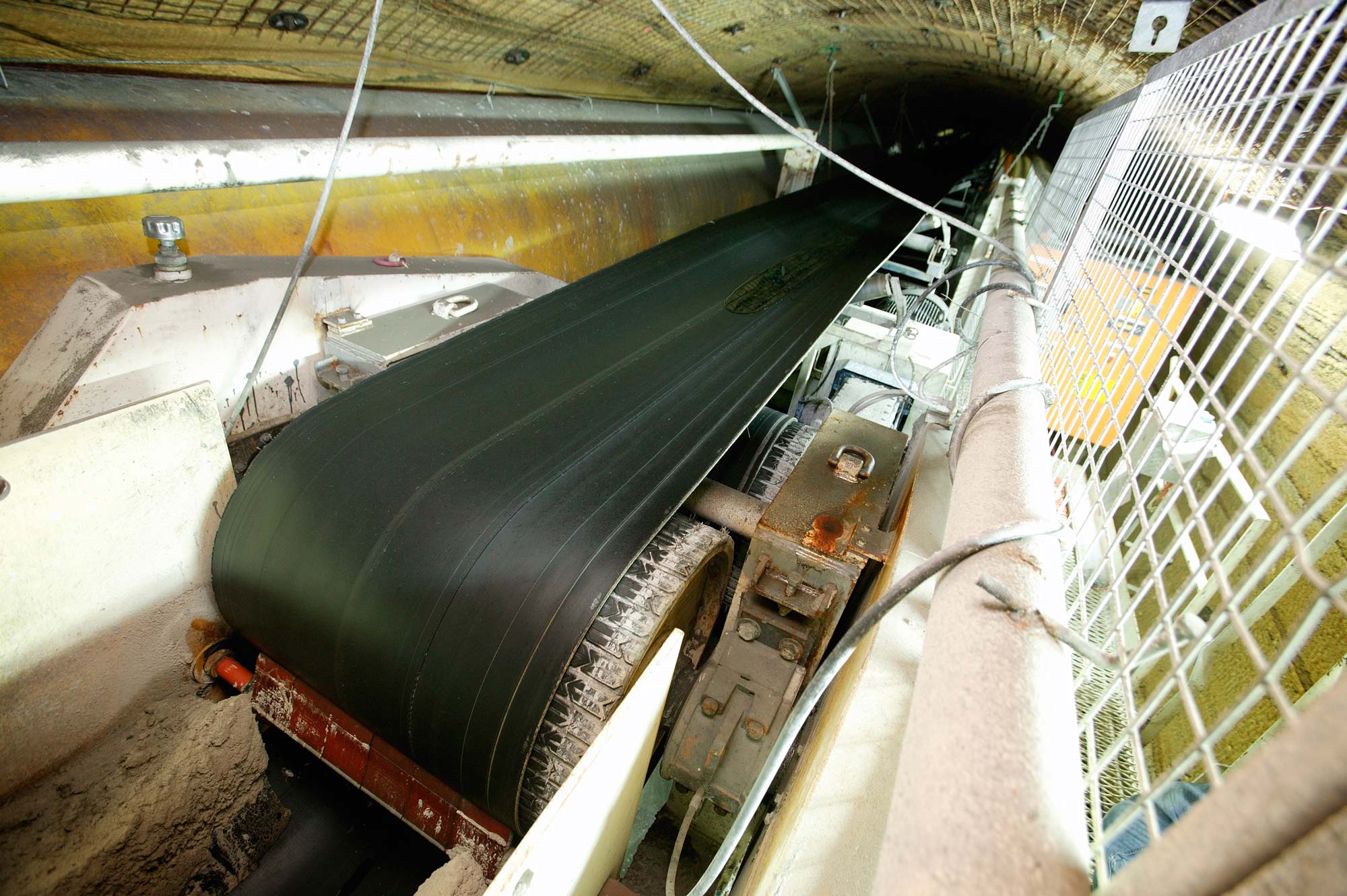Download the spec sheet
Continuous Conveyors: Download the Spec Sheet
Find out now:
Is a Conveyor System Right for Your Project?
Read the White Paper
The Most Complex Conveyor System in North America
A Solution for Every Condition: Search our Project Database
Project Map
Information 24/7
News & Media
Robbins engineers design reliable conveyor systems regardless of whether we are delivering muck through a straight tunnel or a tunnel with multiple curves. Systems always include a main drive, an advancing tail piece, and a belt storage cassette, which are sufficient for many straight tunnels.
When the tunnel has curves it is essential to maintain low belt tension in order to guide the belt through the curves. Robbins’ multiple drive systems, which add booster drives to the conveyor system as the conveyor length increases, maintain low belt tension regardless of the length and number of curves in the tunnel. Our patented, load-sensing curve idlers guide the belt through curves while maintaining maximum muck carrying capacity. When a splice stand is added, then new rolls of belt can be installed into the system in the shortest time possible and you have the most efficient muck removal system available today.
With a Robbins continuously advancing conveyor system the only time the belt must be stopped is to add a new roll of belt. Otherwise, the system runs constantly as the TBM and conveyor continuously advance together. The advancing tail piece contains a protected working window within which workers safely install the idler assemblies while the belt is in motion. The advancing tail piece contains the system’s tail pulley and is mounted on hydraulic cylinders, which allow the belt to be positioned precisely on line and grade.

The design of the advancing tail piece differs depending on whether the conveyor will be mounted on the side of the tunnel or the top of the tunnel. When the conveyor is mounted on the side of the tunnel, the knee braces, side rails, and return idlers (except for curve hold-down idlers) are installed ahead of the advancing tail piece. When the conveyor is mounted at the top of the tunnel, the side rails are hung from the tunnel crown at the advancing tail piece and all idlers installed within the tail piece.
We design our belt storage cassettes specifically for each project to provide the maximum belt storage capacity in a package to fit the space you have available on the job site. The cassette can be located in the tunnel or on the surface. It can be supplied with 300, 400, or 500 m of belt storage capacity. In addition to providing belt storage, the Robbins belt storage cassette maintains proper belt tension at all times — during startup or shutdown, with a full or empty belt.
Putting belt storage cassettes and splice stands on the surface minimizes the number of workers required to go underground, lowering your operating costs– something Robbins engineers are always thinking of.

With our continuous conveyor systems the only time you need to stop excavating is when you install a new roll of belt. Robbins belt splice stands minimize your downtime for installing new belt into the system. Our splice stands allow you to keep a new roll of belt in position and ready for installation at all times. In many cases, using mechanical splices, a new roll of belt can be installed in less than 1.5 hours. There is no need to stop tunneling to vulcanize the splices since they can be vulcanized during planned equipment maintenance periods.

The main drive supplies the initial force needed to move the belt and its load. The main drive can be placed on the surface or at the bottom of the shaft, which means a project’s physical constraints will not determine whether or not you can use a conveyor. Robbins offers drives with a wide range of power, in either fixed speed or variable frequency drive control configurations.
The booster drive allows power to be added at specific locations within the conveyor system as the tunnel advances, allowing belt tension to be kept to a minimum. In a tunnel with many curves, the location of the booster drives is critical since the location directly impacts the maximum tension developed in the belt. Robbins uses proprietary methods to calculate the belt tension when designing multiple drive conveyor systems, methods based on years of experience and data from previous jobs. Booster drives are typically installed on the loaded side of the belt (tripper drives), but may also be required on the return side of the belt in longer tunnels.

There are two types of control systems for multiple conveyor drive systems: natural load sharing and controlled load sharing.
The main drive is the first to start applying tension to the belt, followed by the booster drives in sequence. The use of variable fill hydraulic couplings in the drives allows power to be continually added at a predetermined rate after startup until the system is running at full power. These events must be timed correctly in order for the system to start and run efficiently, and to prevent over-tensioning the belt. With Robbins multiple drive systems, a controlled start-up will take place regardless of the load on the belt. When the conveyor reaches nominal speed each drive motor’s load is determined by the natural dynamics of the system. The main and booster drives share the load proportionately. As the conveyor length increases, additional load-side boosters and/or a return booster are added to continuously control the natural buildup of belt tension.
The belt tension is actively calculated at each drive by monitoring motor torque at each conveyor drive. The use of variable frequency controls and the motor torque feedback loop allows Robbins to precisely control the speed/torque of each drive, thereby actively controlling the belt tension at all points in the system.

 Close
Close